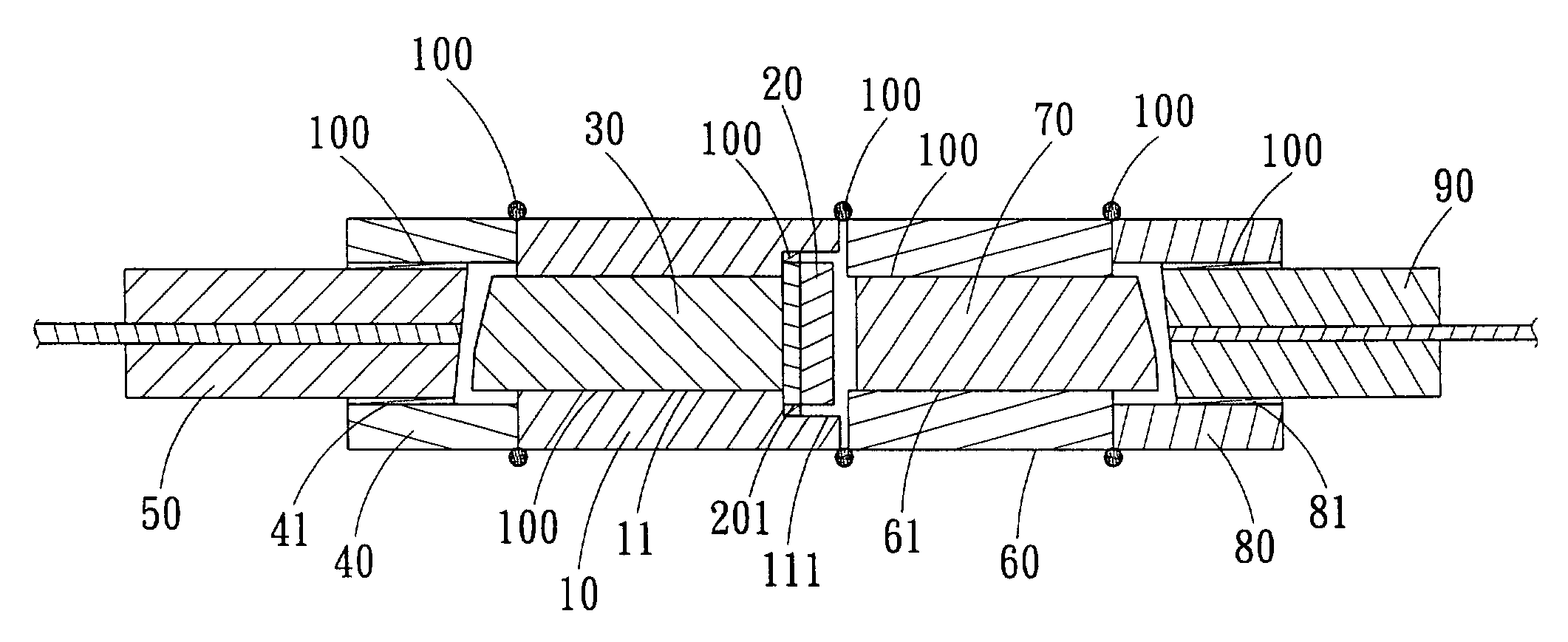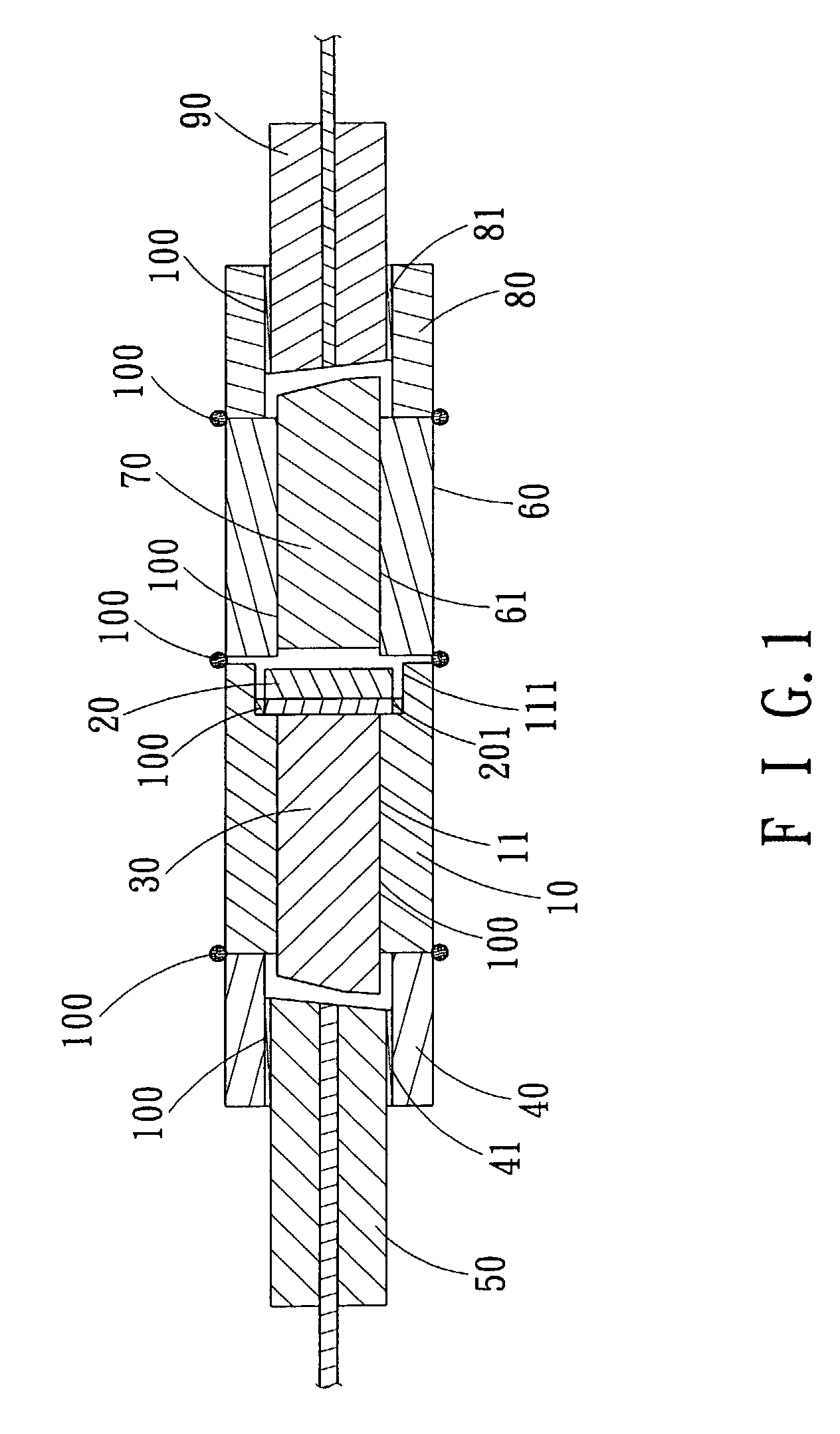Micro-optic fiber device
a technology of micro-optic fiber and optical fiber, which is applied in the direction of optics, instruments, optical light guides, etc., can solve the problems of high thermal dependence loss and insertion loss of devices, low acceptance rate of final products, and difficult finding of skilled workers
- Summary
- Abstract
- Description
- Claims
- Application Information
AI Technical Summary
Benefits of technology
Problems solved by technology
Method used
Image
Examples
Embodiment Construction
[0019]Referring to FIG. 1, wherein a micro-optic fiber device is shown and generally comprising: an optical processing element 20 here taking wavelength division multiplexed (WDM) device as an example), a counter-bore tube 10, three coupling tubes 40, 60, 80, a pair of micro lenses 30, 70 (such as GRIN lenses), a dual fiber pigtail 50 and a single fiber pigtail 90.
[0020]The counter-bore tube 10 interiorly defines a through passage 11. At an end of the passage 11, a step groove 111, which has a greater diameter than the passage 11, is defined for insertion of the optical processing element 20. The epoxy or solder 100 is applied to the outer periphery 201 of the optical processing element 20 and the inner surface of the step groove 111 for strengthening the bonding between the counter-bore tube 10 and the optical processing element 20. The first micro lens 30 is likewise fixed in the passage 11 of the counter-bore tube 10 using epoxy or solder 100 to form a subassembly (including the ...
PUM
 Login to View More
Login to View More Abstract
Description
Claims
Application Information
 Login to View More
Login to View More - R&D
- Intellectual Property
- Life Sciences
- Materials
- Tech Scout
- Unparalleled Data Quality
- Higher Quality Content
- 60% Fewer Hallucinations
Browse by: Latest US Patents, China's latest patents, Technical Efficacy Thesaurus, Application Domain, Technology Topic, Popular Technical Reports.
© 2025 PatSnap. All rights reserved.Legal|Privacy policy|Modern Slavery Act Transparency Statement|Sitemap|About US| Contact US: help@patsnap.com



